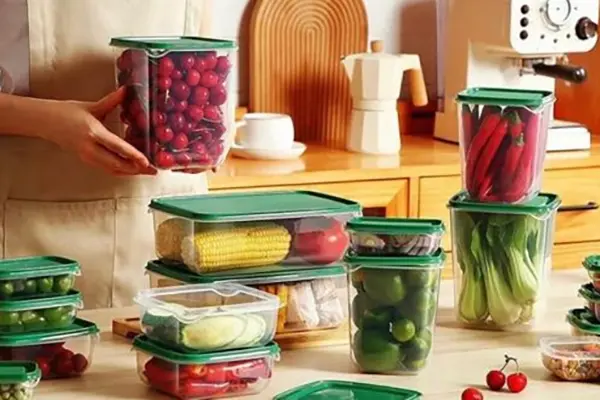Plastic food storage containers like Crisper Plastic Tupper are staples in most kitchens. They help keep fruits, vegetables, and leftovers fresh for longer periods. Many people assume that because these containers are sealed and made of plastic, they provide a completely safe environment for food. However, a common and important question arises — can bacteria grow in Crisper Plastic Tupper? The short answer is yes, bacteria can grow in Tupperware containers, especially if certain storage and cleaning practices are neglected. Let’s explore how and why this happens, and how you can prevent it.
Understanding Crisper Plastic Tupper
Crisper Plastic Tupper containers are designed to store perishable foods such as vegetables, fruits, or cooked meals while maintaining their freshness. The term “crisper” generally refers to containers or refrigerator drawers that help control humidity, preventing produce from drying out.
High-quality Crisper Plastic Tupper products are made from food-grade, BPA-free plastic, which means they are safe for food contact and don’t leach harmful chemicals. However, even with these safety features, they cannot inherently prevent microbial growth if bacteria are introduced into the container.

How Bacteria Can Grow in Plastic Containers
Bacteria are microscopic organisms that thrive in environments with moisture, nutrients, and warmth—conditions that are often present in food storage containers. Here’s how bacterial growth can occur in Crisper Plastic Tupper:
- Residue from Food
Tiny food particles or liquid residues left behind after washing can become breeding grounds for bacteria. Even a thin film of organic material can support bacterial colonies. - Improper Cleaning
If the container is not washed thoroughly, especially in corners or seal grooves, bacteria can persist. Some bacteria, such as Salmonella or E. coli, can survive on surfaces and contaminate new food stored inside. - Temperature Fluctuations
Bacteria multiply rapidly between 40°F (4°C) and 140°F (60°C) — a range known as the “danger zone.” If food is left in a plastic container at room temperature for several hours, bacterial growth can accelerate. - Moisture Build-Up
Crisper containers are designed to retain humidity to keep produce fresh, but excess moisture can create a damp environment that supports mold and bacterial growth, particularly on leafy greens or unwashed vegetables. - Cross-Contamination
Using the same container for raw meat and then for cooked food without proper cleaning can transfer harmful bacteria. Even washing with cold water may not be enough to eliminate them completely.
Preventing Bacterial Growth in Crisper Plastic Tupper
While bacteria can grow in plastic containers, simple hygiene and handling practices can drastically reduce the risk:
- Wash Thoroughly After Each Use
Use warm, soapy water or a dishwasher (if the container is dishwasher-safe). Pay attention to lids, seals, and corners where residue can accumulate. - Dry Completely Before Storing
Moisture encourages bacteria. Allow containers to air dry fully before sealing and putting them away. - Avoid Long-Term Storage at Room Temperature
Always refrigerate or freeze perishable foods promptly. Bacteria multiply quickly at room temperature, especially in leftover meals or cooked food. - Separate Raw and Cooked Foods
Use different containers for raw meats, vegetables, and cooked dishes to avoid cross-contamination. - Disinfect Periodically
Occasionally sanitize containers using a diluted vinegar or baking soda solution to remove lingering odors and bacteria. - Replace Old or Damaged Containers
Cracked, scratched, or cloudy plastic containers can harbor bacteria in small crevices that are difficult to clean. Replace them as needed to maintain food safety.
Does Plastic Type Affect Bacterial Growth?
The material itself—food-grade plastic—does not promote bacterial growth. However, surface condition and cleanliness do. Smooth, undamaged surfaces are less likely to retain bacteria, while scratches and rough areas trap food particles. Therefore, maintaining your Crisper Plastic Tupper in good condition is essential for keeping bacteria at bay.
Conclusion
So, can bacteria grow in Crisper Plastic Tupper? Yes—but only under the right (or wrong) conditions. Bacteria need food, moisture, and warmth to multiply, and if containers are not properly cleaned or stored, they can easily become contaminated.
The good news is that with proper cleaning, drying, and food-handling habits, your Crisper Plastic Tupper will remain a safe and effective way to keep your food fresh. Remember, it’s not the container that’s unsafe—it’s how we use and maintain it. By following hygienic practices, you can enjoy the convenience of Crisper Plastic Tupper without worrying about unwanted bacterial guests.
Post time: 10-31-2025



